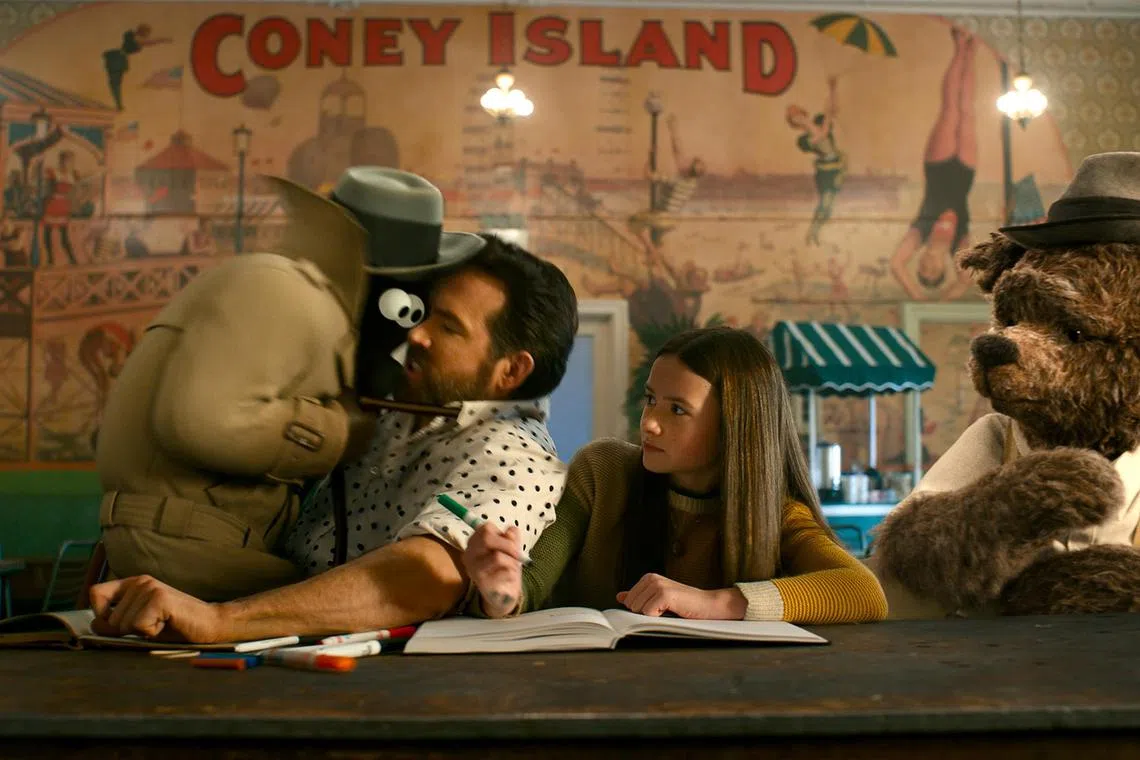At The Movies: In fantasy comedy IF, imaginary friends bring the fun, but lack the magic
Sign up now: Get ST's newsletters delivered to your inbox

(From left) Cosmo (Christopher Meloni), Cal (Ryan Reynolds), Bea (Cailey Fleming) and Lewis (Louis Gossett Jr) in IF.
PHOTO: UIP
Follow topic:
IF (PG)
104 minutes, opens on May 16
3 stars
The story: Bea (Cailey Fleming) is a girl who, much to her alarm, begins seeing strange beings in her apartment building. She meets neighbour Cal (Ryan Reynolds) who, like her, can see the creatures. He assures her that they are real and only those with a gift can see the Imaginary Friends, or IFs, the make-believe companions that children create, then leave behind after they grow older. Through Cal, Bea meets Blue (voiced by Steve Carell), Blossom (voiced by Phoebe Waller-Bridge) and other IFs who are glad to be with humans who can see them.
American writer-director John Krasinski had a supporting voice role in the Pixar animated movie Monsters University (2013) and it is clear that the film and its predecessor, Monsters, Inc. (2001), have rubbed off on him.
All three films feature bizarre yet adorable beasties, ranging from pocket-portable to room-size, who interact mainly with children because their senses are still innocent.
Krasinski’s IF differs from Pixar’s in that his work is a mix of live-action and animation. His main characters are the humans, Bea and Cal, and the story is told through their experiences.
Since the set-up requires that the IFs represent the wishes of children from every era, some jokes are built-in. There are IFs that look like cartoon characters and pop idols who were popular in past decades, so will behave like them.
Krasinski could have milked the famous-characters angle for comedy, but to his credit – or perhaps because of copyright – he does not.
Instead, the jokes arise organically from the IFs’ characters. Most of them have abandonment and trust issues, so the humour tends towards the rueful.

Krasinski’s IF differs from Pixar’s in that his work is a mix of live-action and animation.
PHOTO: UIP
Bea, motivated by troubles in her own life, tries to help the IFs.
Cal, meanwhile, is a character that draws on Reynolds’ nervous energy. Like Bea, he is weathering emotional storms, which is depicted with mordant humour. This is not the snippy, quippy Reynolds persona that viewers know from his Deadpool superhero films (2016 to present). With his sarcasm level turned down to zero, he is a fairly engaging presence.
Pixar has trained audiences to expect that when a movie has children growing up and leaving their playthings behind, tears will flow. When Riley’s Bing Bong fades away in Inside Out (2015) or when Jessie the cowgirl doll sings When She Loved Me in Toy Story 2 (1999), the urge to sob has for many viewers become a Pavlovian response.
IF aims for the same deep emotional beats at the film’s closing moments, but does not quite get there. It feels too predictable and neatly orchestrated. Some magic spells, such as the ones that Pixar owns, are hard to replicate.
Hot take: This take on the Pixar formula of the child outgrowing childish things is sincere and well-presented, but older viewers will miss the strong emotional tugs that only the Disney-linked studio can achieve.


